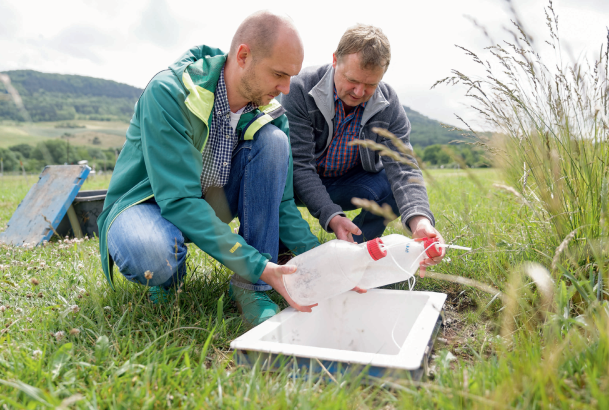Dissolved molecules
Dissolved molecular signals as mediators of biodiversity effects

Jena
Principle Investigator
+49 3641 576172

Jena
Principle Investigator
+49 3641 576168

Jena
PhD student
+49 3641 57 6132
The positive biodiversity-ecosystem functioning (BEF) relationship strengthens with time. This strengthening is most likely the result of altered interactions between plant communities and soil communities. These interactions and their alterations are mediated by the exchange of molecules. This project will analyse the interaction between plant and soil microbial communities and the soil matrix by using an advanced ultra-high resolution mass spectrometric approach.

We will analyse the molecular signatures of dissolved organic matter (DOM) in order to better understand the positive BEF relationship in general and specifically it’s strengthening with time. We will compare the molecular signalling between plant communities and soil microbial communities that have different histories using a non-targeted approach. Taking advantage of the Field Experiment, we will investigate the general effect of plant diversity on DOM composition under field conditions (WP1) and how it is affected by the soil history (WP2). The Ecotron Experiment, in which plants with different community histories are crossed with soils that have different histories, will enable us to assess the relative importance of plant vs. soil history on molecular DOM composition (WP3). In close cooperation with the other subprojects, we will relate the DOM data to plant community properties, such as plant biomass production or plant defence traits, and to microbial-related variables like soil microbial activity, biomass, community structure and taxonomic composition of soil microbiota and fauna. Together, these approaches will provide novel insights into the mechanisms of strengthening BEF relationships by exploring the molecular signals of plant-microbe interactions.
